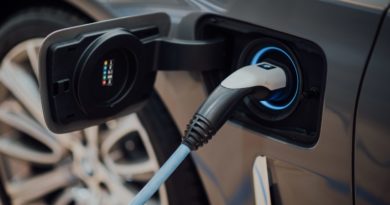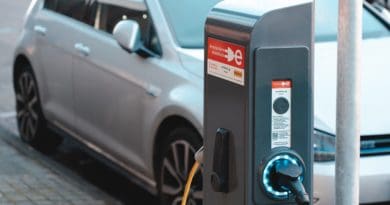Electric Cars & Clean Car Technology of the Future
Gone are the days when plug-in electric vehicles (also known as electric cars or EVs) represented a niche market with drawbacks, such as short battery life and long charging times, too large to compete with standard internal combustion engine (ICE) vehicles. Advancements in technology have all but eliminated these concerns, with most major manufacturers joining the party and releasing their own electric cars, but is there any reason they shouldn’t replace ICE vehicles altogether?
In this article, we’re going to take a look at the advancements being made in EV technology, in particular addressing previous concerns and preconceptions that still surround electric cars. One of the newest of these to emerge regards driver safety, which we’ll leave till the end to get into. Let’s start off with the basics:
Why have we been using ICEs and not electric cars?
Electric cars are not a new phenomenon. The first practical EVs were produced in the 19th century, and their lack of noise and ease of use (not needing gear changes) made them more popular than early ICE cars initially. However, quicker refuelling times and cheaper production costs meant that ICE cars took over when demand for vehicles rose and mass production came into play in the early part of the 20th century.
This same reasoning was held as a maxim in the century that followed: electric cars are expensive to make, they take too long to charge, and their batteries don’t last long enough. But is this still true today?
In short, no. Let us walk you through why.
Why switch to an electric car?
The modern increase in demand for electric cars originated in large part from concerns about climate change, with people looking to reduce their greenhouse gas emissions and pollution in large cities. Electric vehicles represented a clean alternative to ICEs, not relying on burning fossil fuels in order to create energy.
Only climate change deniers would refute this as a benefit, and experts and governments from all over the world have long since acknowledged the need to fund research aimed at improving EV technology and have done so.
This has resulted in important developments in battery technology which has reduced charging times to under an hour in some cases and led to longer-life batteries and even vehicles whose brakes recharge the battery.
The increased profitability that these advancements in the technology have brought with them has encouraged major manufacturers to get in on the act, and increased competition has led to a swathe of models in all shapes, sizes, and prices. Nowadays, all of the following manufacturers have their own series of electric cars:
- Tesla
- BAIC
- BMW
- Volkswagen
- Chevrolet
- Ford
- Daimler (Mercedes, Smart)
- BYD
- Hyundai
- Mitsubishi
- Renault-Nissan
- Toyota
- Kia
And this is just a selection. Here’s a selection of the cheapest electric cars available in the UK at the time of writing, just to give you an idea of how little you could pay for a brand new electric car:
| Model | Make | Battery range | Price |
| Citigo-e iV | Skoda | 265km | £17,455 |
| EQ forfour | Smart | 140km | £17,785 |
| Mii electric | SEAT | 260km | £19,800 |
| e-up! | Volkswagen | 180km | £20,555 |
| MINI Electric | MINI | 180km | £24,900 |
These prices are economical even by normal ICE standards. With a range of 265 kilometres, the Skoda Citigo-e iV, which is also the cheapest of the lot, is particularly good value. The range is the distance the car can travel after a full charge, after which it can be charged up to 80% again in under an hour.
While this may put off drivers who have to travel long distances on the motorway, it is not nearly as much of a put-off for those who mostly use their car for a short commute and the school run, not to mention the benefit of not having to fork out to fill the tank could have on their wallet.
The above models are the cheapest on the market, and their range reflects this. If you’re willing to fork out a bit more for more range, however, there are several EV models offering up to 500km of range on one charge! This is as much mileage as many tanks of petrol or diesel offer.
Cost and battery range were once major issues for those who would consider an electric car but can’t get past the lack of practicality compared to an ICE vehicle. While this is, to an extent, still true in some senses, the technology has come along so much that this is no longer an issue for a great many of us. Why switch to an electric car? Why not?
Electric vehicle technology of the future
Despite having come a long way in the last couple of decades, there are still a number of ways that electric cars could improve, and there’s a bit of a race going on to develop the technology. One of the biggest work-ons for the industry is the lack of a universal high-speed charger that works for all models of electric vehicles.
To be clear, all electric cars can be charged using a charging cord that can plug into a normal grounded wall socket in your home, which is known in the industry as Level 1 charging. All electric cars can also be charged at public charging stations, which charge them much more quickly – and this, you guessed it, is called Level 2 charging.
The thing that is needed is a universal Level 3 charger, which many manufacturers offer independently, but each of which only works on certain models. Here are the Level 3 chargers currently available:
- Tesla Supercharger, which only works for Teslas
- CHAdeMO, the most popular standard type, which is used by the Nissan Leaf, Kia Soul, Citroen C-Zero, Honda Fit, and a few more
- CCS, which is used by many manufacturers, including Volkswagen, BMW, Chevrolet, Ford, Mercedes, and Volvo
For now, electric vehicle owners need to be aware of which charger they’re able to use for their vehicle. This lack of exclusive compatibility is expected to change in the near future, however, with Tesla intent on adapting its external charger to support non-Teslas. It could be the perfect time to get yourself an EV!
Are electric cars safe?
One issue that has arisen as electric cars have become widespread in the last decade is around vehicle safety. Fires and explosions involving electric vehicles tend to catch headlines, and skeptics enjoy pointing to these as evidence of the risks involved in EVs.
Data from the Fatality Analysis Reporting System in the US, however, indicates that drivers seem to be at less risk of fire or explosion in an electric car than in a standard ICE vehicle. In cases of fatal vehicle crashes between 1993 and 2013, fire was found in just 2.6% of EVs, compared to 4.4% of ICE vehicles.
What risks do EVs pose?
The above is not to say you shouldn’t be careful with your electric car. If you’re an EV owner, be sure not to overcharge your car. Overcharging will result in overheating, which can damage the battery and increase the risk of fire.
If you’re careful not to overcharge and take your vehicle for regular maintenance checkups, however, it should be no more of a risk to you than a normal car.
Click here for more stories and others like this.



